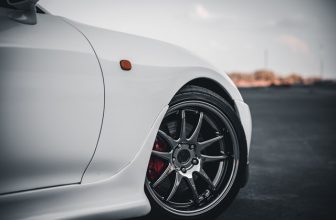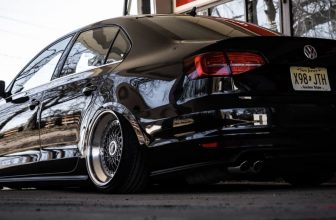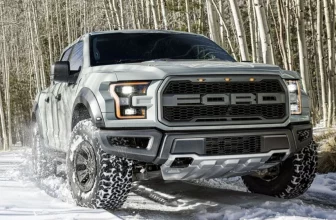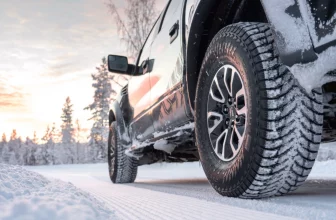Do you envy the precise steering and exceptional responsiveness of racing cars? Do you wish to test the speed limits of your vehicle using extreme performance tires? How much information do you have regarding stree track and competition tires?
Tire manufacturers are always exploring ways to spruce up the performances of different vehicles. Their quest has seen the production of several tire categories. Drivers can find a tire for whichever level of performance they need. Racing enthusiasts go for extreme performance racing tires.
Daily commuters can enjoy the offerings of extreme performance tires without setting foot on the race tracks. Manufacturers are continuously innovating to improve the technical abilities of street track and competition tires. The tires excel on dedicated racing tracks and highways.
There are many factors that drivers need to evaluate before purchasing any tires. The tire selection and purchase process are confusing. It is hard to differentiate brands by visual inspections. There may be too much information hovering around about tires causing confusion, or scanty information that cannot support the decision-making process.
Our goal is to guide you through the tire purchase process. We provide impartial tire reviews and provide easy-to-follow consumer guides. We debunk the myths around street track and competition tires, provide recommendations and highlight some shortcomings of these tires. Sit tight and learn.
| Tire name | Competition beaten | Dry performance | Dry traction | Cornering stability | Steering response |
|---|---|---|---|---|---|
| Pirelli P Zero Corsa System | 100% | 9 | 8.9 | 8.9 | 9.1 |
| Michelin Pilot Sport Cup 2 ZP | 100% | 9.8 | 9.8 | 9.8 | 9.8 |
| Michelin Pilot Sport Cup 2 | 98% | 9.3 | 9.4 | 9.4 | 9.1 |
| Pirelli P Zero Trofeo R | 93% | 9.2 | 9.2 | 9.1 | 9.3 |
| Yokohama ADVAN A048 | 90% | 9.1 | 9.2 | 9 | 9 |
What defines street track and competition tires?
Tires in this category are suitable for track competition and daily street driving. It implies that they provide the best traction to match the demanding driving needs of a racing track. Manufacturers fine-tune every component of the tires to ensure precise steering, superior handling and excellent responsiveness to braking. What features contribute to the desirable performances of these tires?
Low profile tire construction
It is impractical to expect a podium position while driving an unstable vehicle. Racing cars are low-laying, a characteristic that enables them to negotiate corners at high speeds. To enhance their stabilities, manufacturers design the best street track tires with the lowest profiles. The low-profile tires fit on different sporty and luxury vehicles. With these tires, drivers of sporty cars can drive at high speeds on the highway without compromising their safety.
Continuous center ribs and soft tread material
If you enjoy track racing, then you have seen how fast the drivers navigate the tracks. Steering the vehicle does not seem to provide any challenges. Racing drivers have experience in demanding driving environments. The remarkable handing capabilities of these vehicles depend on the quality of the tires. Tires need to maintain a firm grip on the road, whether driving in a straight line, banked road or sharp corners.
The best street track tires do not have complicated tread patterns. Instead, they have continuous center ribs, which provide adequate contact surfaces for excellent traction. The ribs alone cannot provide enough traction for the demanding racing tracks. Manufacturers utilize soft materials for the treads and underneath layers. This soft rubber is stickier than the one used in ordinary tires and grips firmly and evenly on the tarmac.
Some manufacturers use softer rubber at the outer ribs to maximize grip when cornering. It improves the responsiveness of the tires to sterling controls. Drivers using these tires achieve precise cornering.
Modest wet traction
Dedicated racing tires can perform well in warm weather alone. They lose traction when driving over the wet tarmac resulting in poor handling. Unlike track-only tires, street track and competition tires provide dependable wet traction. With these capabilities, average drivers can enjoy a balanced performance when driving in rainy seasons. Handling remains predictable.
Reinforced interior casing
For an extreme performance tire, every component must have superior capabilities. On the racing tracks, drivers engage in aggressive acts like skidding. The quick rotations lead to the generation of heat around the tires. The heat can deform the treads, increasing the scouring effect of the tarmac.
To prevent premature tire damage, manufacturers use multi-layered tire constructions. They fuse several thick rubber layers and blend them with plies of tensile steel and nylon or polyester. These components enhance the heat resistance capabilities of the tire to provide remarkable race track performance. They also enable drivers to travel long distances in hot summer without encountering defects.
Better durability and ride comfort
The best street track tires do not focus on track performance alone. Manufacturers seek to optimize the durability for daily commutes and ride comfort for long-haul travels. The tires use a blend of resistant additives to ensure the tires do not suffer the effects of tarmac abrasion. That way, drivers enjoy better mileages than those of dedicated racetrack and autocross tires. Irrespective of these enhancements, the tires retain their traction capabilities.
For ride comfort, manufacturers tweak the tread patterns a little bit. Although they do not contribute to entirely silent tires, they provide reasonable levels of comfort. Car occupants can hear faint hums when the tire is running on the road but is low enough to allow continuity of conversations in the cab.
How does the performance of the best street track tires compare with other tire categories?
Street track and competition tires rank better than most high-performance summer tires. However, they are only suitable for highway and track driving. You will struggle if driving on any other road.
For a start, the tires lack winter traction. If you live in areas experiencing extreme winter conditions, you need to purchase a set of winter tires that come into action in the cold season.
The best street track tires have low profiles and non-aggressive tread patterns. They are unsuitable for off-road driving. For better results, use all-terrain tires or specialized off-road tires.
Verdict
Average drivers can have a taste of the extreme performances of racing cars without infringing racing regulations. These tires are suitable for drivers of sporty vehicles who live in areas experiencing warm weather for most parts of the year. As extreme performance tires, expect to spend more money on the purchase.
Frequently asked questions
Are street track and competition tires legal for highway driving?
Yes. These racing tires are allowable on highways. Despite their superior speed capabilities, drivers must observe speed limits.
Track and competition tires appear smooth. Are they safe for driving?
Street track and competition tires do not have aggressive tread patterns. It gives them a smooth appearance. However, the tires have superb traction that makes them be among the safest tires.






